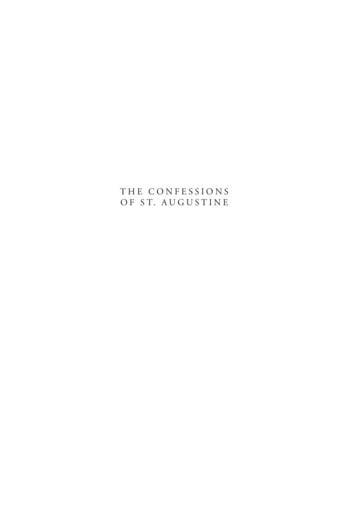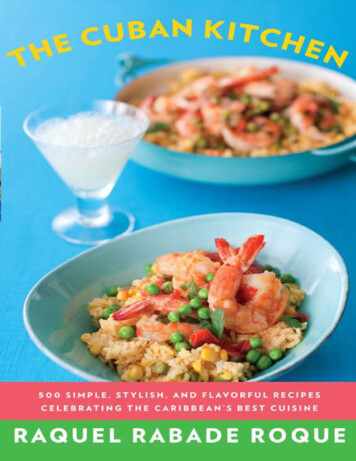
Transcription
THIS IS A BORZOI BOOKPUBLISHED BY ALFRED A. KNOPFCopyright 2011 by Raquel Rabade RoqueAll rights reserved. Published in the United States by Alfred A. Knopf, a division of Random House, Inc., New York, and in Canada by Random House of Canada Limited, Toronto. Originally publishedin a shorter version in Spanish under the title Cocina Cubana by Vintage Español, in 2007. Copyright 2007 by Raquel Roque.www.aaknopf.comKnopf, Borzoi Books, and the colophon are registered trademarks of Random House, Inc.Library of Congress Cataloging-in-Publication DataRoque, Raquel Rabade.[Cocina cubana. English]The Cuban kitchen / Raquel Rabade Roque.p. cm.eISBN: 978-0-307-59543-01. Cooking, Cuban. 2. Cookbooks. I. Title.TX716.C8R3313 2011641.597291—dc222011006633Cover photographs by Sabra Krockwith food styling by Mariana VelasquezCover design by Carol Devine Carsonv3.1
For my family and friends with love and gratitude.Thank you for sharing your Cuban recipes and memories.
INTRODUCTION: Cuban cooking: lore, history, and anecdotesSTOCKING A CUBAN KITCHEN: Equipment and ingredientsCLASSIC CUBAN COCKTAILS: More than sugar and rumcócteles clásicos cubanosBATIDOS: Milkshakes and juice drinks the Cuban waybatidos y jugos tropicalesAPPETIZERS: Croquettes, empanadas, and frittersaperitivos: croquetas, empanadas, y friturasBROTHS, SOUPS, AND CREAMS CUBAN STYLEcaldos, sopas, y cremas al estilo cubanoNUTRITIOUS POTAGESpotages más nutritivosCUBAN SANDWICHES, WRAPS, AND CHOPSsándwiches y bocaditosDRESSINGS, SAUCES, MOJOS, AND THE FAMOUS SOFRITOaliños, salsas, mojos, y el sofritoVEGETABLES AND ROOT VEGETABLESvegetales y viandasPLANTAINS IN MANY VARIATIONS
los plátanos en variantesRICE GOES WITH EVERYTHINGel arroz va con todoPASTAS CUBAN STYLEpastas italianas a la cubanaCUBAN SALADSensaladas cubanasCUBAN EGG RECIPESplatos rápidos con huevosTROPICAL CATCH OF THE DAYcon el sabor del Mar CaribeCHICKEN THE CUBAN WAYpollo a la cubanaBEEFcarne de resPORKpuercoVEAL, SAUSAGE, AND OTHER MEATSternera, salchichas, y otras carnesCUBAN BABY FOODpara los más pequeñosTHE CUBAN PRESSURE COOKERla olla a presión cubanaLIGHT CUBANplatos ligeros cubanosCUBAN DESSERTSpostres cubanos
CUBAN ICE CREAMS AND FROZEN TREATShelados y granizados cubanosCUBAN COFFEE, CORTADITO, AND MOREcafé cubano, cortadito, y másCUBAN CANDIES: Old-and new-fashionedcaramelos cubanosACKNOWLEDGMENTSRESOURCESINDEX
THE COOKING OF CUBA is as rich as its landscape and as diverse as itspeople. It is a fusion and a work in progress. It combines the simplicity ofpeasant food, which has little regard for measurements, with elegant Europeancooking traditions. As the Caribbean’s largest and most beautiful island, from itsearly days Cuba boasted an ocean full of fish and a land filled with fruits andvegetables. You will find recipes that come directly from Spanish, French,African, Caribbean, and Chinese origins. You will be surprised by recipes thatare just uniquely Cuban. Cuban cooking was at its height in the 1950s. Havanahad so many restaurants. One could find Spanish taverns, American diners,Italian eateries, and Jewish delis alongside Chinese kitchens. The streets werejammed with food vendors selling peanuts and pirulíes (Cuban candy on a stick)and lined with classy French gourmet restaurants. Cuban cooking was and isglamorous and exciting. Today Cuban cooking is alive in Miami and whereverthe roots from Cuba still grow strong. It is a defining cuisine that keeps newgenerations of Cubans proud of their heritage. It is what we share and what welike to share with others, and that is why I wrote this book.Through the years, I have realized how much I love being Cuban, even thoughmy own family in Cuba was always very “modern” and americana. My parentsspoke English, even in Cuba. My dad was a World War II veteran and hadstudied in Richmond, Virginia. My mom worked outside the home. She was ateacher in a very cool school in Cuba called the Havana Business Academy,which was owned by Canadians. She used to drive her all-American ’57 Chevyall around the streets of Habana Vieja, Vedado, and Fontanar. We used tocelebrate Halloween when no one else did, and we used to watch Jerry Lewisflicks and love them as much as the Mexican comic actor Cantinflas’s films. Ourneighbors were americanos, and our family always spoke of Miami as if it werean extension of a magical Cuban territory. But now I know how Cuban I have
always felt and will always feel. It is the way we eat, dress, dance, and sing. AndI do know that, as Cubans, we have always loved to share what it means to feelCuban. I know of no better way to share that experience, that feeling, thanthrough food. Cooking Cuban is feeling Cuban. This book has all the recipes thatshaped me through childhood and adulthood, and that have given my childrenand, I hope, someday their children a heritage and a way of life. This book is forchefs and novice cooks, for Cubans and non-Cubans, for those who lived on theisland and those who have never set foot there. This book is meant to preservefor future generations the rich culinary tradition of a people, and to reflect thebest of my two worlds: the Cuba of the 1950s, when I was a child, and ourHispanic presence in today’s America. The essence of all this is captured in TheCuban Kitchen.Ever since the days of Ricky Ricardo, the idea of being Cuban has alwaysbeen fun. So many jokes, so many caricatures, and so much nostalgia ready totug at us at any moment. We play dominoes, smoke cigars, talk politics, drinkCuban coffee, wear guayaberas, and have splendid parties. We are proud that wegrew up in a Cuban household:Where coffee, milk, and sugar were part of a balanced breakfast.Where all it took was just that one look.Where we loved white rice and fried eggs.Where lentil soup was considered comida de presos (prison food).Where Spanish was my primary language and the only language I wasallowed to speak at home.Where music and TV were never played on Good Friday, because it was apecado capital—cardinal sin!Where we ate bacalao (dried codfish) on Good Friday because all other fishwere too expensive, and if it was good enough for our ancestors in Spain, itwas good enough for us!Where we ate lechón (suckling pig) at Nochebuena (the traditionalChristmas Eve party), New Year’s Eve, birthday parties, and every othersocial function.
Where malanga (a root vegetable) and manzanilla (chamomile tea) werethe remedies to end all remedies. And they still are!Where we cured everything with Vicks VapoRub. Okay, I admit I reallythink it is the cure for everything.Where I was not allowed to sleep over at anybody’s house, but my friendscould all come over to our house, and that was completely logical to myparents, to me, and even to my friends.Where la carne (meat) came only from la carnicería (meat market) andfrom your own personal carnicero (butcher), who was also your unofficialCuban shrink, and the meat and potatoes were literally carne con papas.And the dish was served over rice.Where oxtail stew had the colorful name of rabo encendido, or “fiery tail.”I grew up in a household where the frijoles exploded in the pressure cooker justabout every day.I grew up in a proud Cuban household, survived, and thrived!
YOU CAN CERTAINLY GO ALL OUT and splurge on your Cuban kitchen,but the basics of a well-stocked kitchen are simple. Don’t be tempted by all thegadgets, and remember that ingredients are more important in creating greatrecipes. Here is a list of must-haves for Cuban (or any other serious) cooking.POTS AND PANSA large pot for soup or stew stocksRoasting pan and rackSaucepans (at least two different sizes)Skillets (one nonstick and one cast-iron)BAKING EQUIPMENTCookie sheetGlass baking dishLoaf panPie plateWire rackUTENSILSColandersPastry bagRolling pinSpatulasSpoons (slotted and long-handled)TongsKITCHEN APPLIANCES
BlenderElectric mixerFood processorFor the experienced or just plain curious Cuban cook, these are great to addslowly as you acquire more skill:La Caja China (The Chinese Box—the Cuban roasting box)Candy thermometerChurro maker (churrera)Corn-and-meat grinderCuban coffeemakerElectric palomilla grill—for off-the-grill flavorFlan moldFlying saucer (platillo volador) sandwich pressGarlic mortarIce-cream makerPaella pan (straight-sided skillet)Plantain slicerPressure cooker (both traditional and microwave)Rice cookerSandwich press (press grill)Tostón maker (tostonera)You can find much of this equipment in general superstores, national chains,bodegas, or supermarkets. More specialized items are available online at sitessuch as www.cubanfoodmarket.com (see Resources).
BUILDING THE CUBAN PANTRYThese are the herbs, spices, and other flavors to emphasize in your kitchen forCuban and many other Latin cuisines.Bay leavesBijol annatto powder (yellow food coloring)Bitter or sour orange juiceBlack pepperCinnamonCuminDry white wineGarlicLemons and limesOnionsOreganoPaprika (hot)ParsleySaltStar aniseTomato sauceVanilla extractIn addition, this is what the Cuban cook buys regularly at the grocery store orbodega; many of these items are available online as well (see Resources).Coco López cream of coconutCondensed milk (sweetened) ChorizoCuban breadCuban crackersCuban cracker mealEvaporated milkFrozen tropical-fruit pulpGreen bell pepperGuava pasteIronbeer (soft drink)Jupiña (soft drink)Malta beverage (in a six-pack)
Malanga, ñame, cassava, and plantainMango and tamarind nectarMasa harinaMaterva (soft drink)Olive oilQueso blanco (white cheese)RiceRoasted red peppersSalt cod (bacalao)Sangria (bottled)Sidra (Spanish cider)Spanish green olivesSugarcane juiceVegetable oil
THE CREATION of these classic romantic Cuban cocktails dates back to the1920s, when barmen from all over the world joined the native Cuban bartendersto serve tourists from all over the world. A unique style of cocktail making wassoon born, in which tropical fruits were mixed with the smoothest of rums, andnumerous celebrities became regulars at the island’s famous bars. Over theyears, you could often see Ava Gardner, Errol Flynn, Mary Pickford, Nat KingCole, and Greta Garbo having a drink and dancing to the rhythms of the island intheir guayaberas and smoking Cuban cigars. El Floridita and La Bodeguita delMedio were hangouts for the legendary honorary Cuban Ernest Hemingway inthe 1940s and 1950s. Federico García Lorca, the Spanish poet, was also a regularat most of the bars in Havana in the 1930s. What a mecca, and what a legend!Mix one of these drinks, close your eyes, and dream.
STOCKING YOUR CUBAN BARThese items are essential to create your ultimate Cuban cocktail party. Thebasics are the same for all good drinks.GlasswareDrinks always taste better when served in a beautiful glass. When shopping forglassware for your bar, bear in mind that the trend over the years has been toserve drinks in larger glasses. Not only do they look better, but they canaccommodate many different types of drinks, and the home bartender will needto buy less. Some glasses to consider:SHOT GLASSES—always present in any bar, the original bar measurePONY GLASSES—stemmed glasses for liqueurs and brandiesCOCKTAIL GLASSES—varying in size from 3 to 6 ounces; the mostpopular glasses. Beloved for their distinctive Y shape.HIGHBALL GLASSES—straight-sided glasses holding 8–10 ouncesOLD-FASHIONED GLASSES—just the right size for anything on therocksCHAMPAGNE GLASSES—for all bubbly drinksGarnishes and CondimentsAngostura bitters, black pepper, cocktail olives (no pimiento), cocktail onions(pickled), limes, lemons, oranges, grenadine, horseradish, maraschino cherries,Rose’s lime juice, salt, coarse salt, sugar, Tabasco sauce, Worcestershire sauce,orange bitters MixersWater, club soda, cola, diet cola, lemon-lime soda, milk, orange juice, tomatojuice, tonic water, ginger ale, cranberry juice, pineapple juice, beerCUBANS AND RUMRum and rum drinks are very much part of the Cuban heritage. Don’t forget thatrum is a product of sugarcane, which for centuries was the major industry in theCuban economy. After all, Santiago de Cuba, on the southeastern tip of the
island nation, was the birth site of the original Bacardi distillery. The highlyrespected and dominant firm of Bacardi and Company Ltd. began its corporatelife in 1862 in a plant that consisted of a tin-roofed shed housing a few essentialbarrels and fermenting tanks, and also a colony of fruit bats, which eventuallybecame the icon of this famous brand. At the height of rum mania in the 1950s,Havana was full of “rum-tasting” distillery tours. Bacardi had launched itsfamous Hatuey beer brand and had already erected in the capital city an ArtDeco masterpiece, the Havana Bacardi Building. Other brands of Cuban rum areCasa Moreno, Havana Club, and Ron Matusalem.
CUBA LIBRE CubalibreViva Cuba! (Long live free Cuba!) was the war cry of the Mambises, the combatants of the Independence Army, who fought to free Cuba from the Spanish colonists. The Cuba libre was one of the firstcocktails to be mixed by Cuban bartenders, and throughout the years this drink has also been ironically called La Mentirita, or the Little Lie. You see, the people of Cuba have seldom experienced trueliberty. Despite the political context, or perhaps because of it, this drink has gained worldwide fans.1 DRINKIce (either crushed or cubes)5 ounces cola2 ounces white rum1 teaspoon lemon juiceLime slice for garnishPlace the ice in a chilled glass; pour in the cola, rum, and lemon juice. Mix well,and garnish with the lime slice.
DAIQUIRI daiquiriThis cocktail was created at the Daiquiri mines, located in the easternmost region of Cuba, by an engineer who needed relief from the intense humid heat of the area. In the 1920s, the drink was improvedand made famous by the bartender at El Floridita bar, known as Constante. This is what Hemingway drank at El Floridita, and what he so vividly describes in his book Islands in the Stream. The classicdaiquiri uses lime juice, but a daiquiri can also be made with strawberry, pineapple, or other fruit juice. It can be frappé, which is mixed in the blender for a frozen-drink appeal, or natural, which is justmixed and served.1 DRINKJuice of ½ lime1 teaspoon sugar1 cup crushed ice2 ounces white rumLime slice for garnishIn a blender or food processor, blend all the ingredients until frosty. Pour into achilled cocktail or champagne glass, and garnish with the lime slice.NOTE You can use your favorite fruit, but always make sure it is fresh and in season for the best flavor. You can also use a combination and call it a tutti-frutti daiquiri. Check out the effect on yourguests when you serve multicolored daiquiris at your next get-together. This is a perfect drink for summer weddings, birthdays, and barbecues.
ORANGE DAIQUIRI daiquiride naranja1 DRINK½ ounce lime juice½ ounce fresh orange juice1 teaspoon sugar2 drops curaçao1 cup crushed ice2 ounces rumIn a blender or food processor, blend all the ingredients for about 20 seconds.Pour into a chilled cocktail or champagne glass.
CHERRY DAIQUIRI daiquiride cerezasThe vibrant color always makes this a huge hit.1 DRINK½ ounce lime juice1 teaspoon cherry liqueur1 teaspoon grenadine1 cup crushed ice1½ ounces white rumLime slice for garnishIn a blender or food processor, blend all the ingredients for about 20 seconds,and pour into a chilled cocktail or champagne glass. Garnish with the lime slice.
CHAPARRA PUNCH ChaparraThis old Cuban punch is perfect for a weekend of festivities and celebration, since you can refrigerate it for a couple of days and it actually tastes better the second time around. The name is derived fromthe famous Chaparra sugar mills in Cuba. Serve it in a punch bowl or pitcher. Pour the punch, listen to Arturo Sandoval music, and be transported to Havana in the 1940s.8 DRINKSPeel of 1 lime1 bottle white rum½ bottle sweet vermouthPlace the lime peel in a jar, and add the rest of the ingredients. Refrigerate for atleast 24 hours for better taste. Serve chilled. Refrigerate the rest for future use.SPECIAL HINT If you would like to make individual Chaparra drinks, stir in a mixing glass 1 ounce white rum and 1 ounce sweet vermouth with ice, and strain. Add a lime twist and serve. Butremember that refrigeration serves to blend the two liquors to perfection.
HAVANA SPECIAL HabanaespecialThis true Creole recipe uses tropical pineapple to create the perfect drink. I remember that my father would order this in the restaurant La Roca, which is where our family went for special occasions. Itall felt so sophisticated.1 DRINK2 ounces white rum2 ounces fresh pineapple juice1 teaspoon Maraschino liqueur1 cup crushed ice1 slice pineapple for garnishPour all the ingredients into a cocktail shaker, and shake vigorously to mixthoroughly. Serve in a tall glass or an old-fashioned glass, and garnish with thepineapple slice.
HEMINGWAY SPECIAL especialde HemingwayA drink named in honor of Ernest Hemingway, who loved our island for its ocean, its folklore, and its nightlife—but mostly for its people. He used to spend many afternoons in the Floridita bar, which isas famous for its drinks as for its drinkers. My mom swears that I sat next to Ernest Hemingway at the circus in 1959, and that he told her, “Qué linda la niña!”—“Your girl is so cute!” That is a Cubanmom’s tall tale! But I do repeat the story to anyone who will listen. (And I add that it partly inspired my choosing bookselling for a profession.) Back to the cocktail: It has no sugar, and that is how thefamous writer liked it. To be enjoyed on hot summer afternoons while reading The Old Man and the Sea or Death in the Afternoon, or perhaps Oscar Hijuelos’s The Mambo Kings Play Songs of Love, amodern erotic classic.1 DRINKJuice of ½ lime1 teaspoon Maraschino liqueur2 teaspoons grapefruit juice2 ounces white rum½ cup crushed iceIn a blender or food processor, mix all the ingredients, and pour into a chilledcocktail glass.
ISLE OF PINES Islade PinosThe Isle of Pines in Cuba (now called Isla de la Juventud) is said to have inspired Robert Louis Stevenson to write his novel Treasure Island. It is a lush, beautiful place, and this drink is lush andbeautiful as well.1 DRINK2 ounces grapefruit juice2 ounces white rum½ teaspoon sugar½ cup crushed iceIn a cocktail shaker, mix all the ingredients and shake vigorously for 10 seconds.Pour into a chilled cocktail glass.
THE MOJITO elmojitoWhat can we say about the trendiest drink, the mojito? Just imagine the rounds of mojitos served at La Bodeguita del Medio, the Cuban temple of food and drink and the museum of the decadent era inthe 1950s in Havana, where movie stars, intellectuals, and mobsters were equally treated to old-fashioned Cuban hospitality, and where every word seemed just a little shady and every action just a littleon the edge. We know that Sir Francis Drake invented the mojito and that Hemingway drank his daiquiris at El Floridita but always, always drank his mojitos at La Bodeguita del Medio. In Cuban streetslang, mojo is “soul” and ito is “little,” so try these mojitos for just “a little soul.”1 DRINK3 spearmint leaves, plus 1 for garnishJuice of ½ lime½ teaspoon sugar2 drops Angostura bitters2 ounces white rum½ cup crushed iceSplash of sparkling mineral waterIn a food processor or with a mortar, crush the three mint leaves. Mix the juice,sugar, crushed mint leaves, and the rest of the ingredients except the mineralwater in a cocktail shaker. Shake to blend, then add the mineral water. Stir wellto make the mineral water bubbly. Serve in a tall or highball glass. Garnish withthe mint leaf.
SANTIAGO SantiagoSantiago de Cuba is one of the most beautiful provinces of Cuba, and this drink will transport you there.1 DRINK¼ ounce lime juice½ teaspoon sugar1 ounce white rum½ cup crushed iceIn a cocktail shaker, shake all the ingredients vigorously for 10 seconds. Pourinto a chilled cocktail glass.
YUMURÍ PUNCH YumuríThe Yumurí Valley has been the inspiration of authors, singers, and the country folk of Cuba. This drink brings Cuban Americans back to our roots.6 DRINKSJuice of 6 orangesJuice of 2 lemons6 teaspoons sugar4 ounces white rum3 drops Angostura bitters2 cups crushed ice6 pineapple, orange, or lime slices for garnishIn a small pitcher, thoroughly mix together all the ingredients except the garnish.Refrigerate for a couple of hours. Serve in a tall or highball glass with a slice ofyour preferred fruit as garnish.
CUBANITA cubanitaThis drink is sweet and very suitable for a lazy afternoon.1 DRINK2 ounces rum elixir (see Resources)1 ounce heavy creamPour the rum elixir into a cognac or pony glass and top it with the heavy cream.Stir, mix well, and serve.
MULATA mulataMulatas are some of the prettiest Cuban women, with African Caribbean features and complexions the color of café con leche. Cuban mulatas have long been the muses for painters, writers, and otherartists.1 DRINK½ ounce lime juice¼ ounce coffee liqueur2 ounces white rum½ cup crushed iceIn a cocktail shaker, mix all the ingredients and shake vigorously until blended.Serve cold in a chilled cocktail glass.
CUBAN SPECIAL cubanoespecial1 DRINK2 ounces light rum2 drops curaçao½ ounce lime juice1 ounce pineapple juice¼ cup crushed or cracked icePineapple slice for garnishMix all the ingredients except the pineapple slice with crushed or cracked ice ina shaker or blender, pour into a chilled cocktail glass, and garnish with thepineapple slice.
GUANÁBANA COCKTAIL cóctelde guanábanaThe guanábana (soursop) is similar to the better-known cherimoya. It can grow to the size of a grapefruit, and the skin is marked with a fingerprint-like pattern, making the fruit look like a greenpinecone. The flesh when ripe is soft, creamy, and very fragrant. The guanábana nectar in this recipe can be found frozen or canned at your Latin market or in the Latino section of your localsupermarket.1 DRINK2 ounces white or light rum1 ounce guanábana (soursop) nectar1 teaspoon lime juice¼ cup crushed or cracked iceMix all the ingredients with crushed or cracked ice in a shaker or blender, andstrain into a chilled cocktail glass.
HAVANA BANDANNA Pañuelohabanero1 DRINK2 ounces white rum½ ounce lime juice1 overripe banana, peeled and sliced¼ cup crushed or cracked iceBanana liqueur, if available and to your tasteMix all the ingredients except the banana liqueur with cracked or crushed ice ina blender until completely smooth, and pour into a chilled old-fashioned glass. Ifyou’d like, float a dash of the banana liqueur on top.
BACARDI SOLO sóloBacardi1 DRINK1½ ounces light or white rum, preferably the namesake½ ounce lime juice1 teaspoon grenadine¼ cup crushed or cracked iceMix all the ingredients with cracked or crushed ice in a shaker or blender. Pourinto a chilled cocktail glass.
BACARDI SPECTACULAR Bacardiespectacular1 DRINK1½ ounces light or white rum, preferably the namesake¾ ounce gin1 ounce lime juice1 teaspoon grenadine½ cup crushed or cracked iceMix all the ingredients with crushed or cracked ice in a shaker or blender, andstrain into a chilled cocktail glass.
HAVANA CLUBHavana Club is another famous brand of Cuban rum still alive on the island today.1 DRINK1½ ounces white or light rum½ ounce dry vermouth¼ cup cracked ice1 mint sprig, if available, for garnishMix all the ingredients except the mint with cracked ice in a shaker or blender,and strain into a chilled cocktail glass. Garnish with the mint sprig.
CUBAN EGGNOG cremade vieThis drink is much sweeter and thicker and served in smaller portions than its American counterpart! This was my mom’s staple item to bring to all our celebrations, in hot or cold weather! The nameliterally means “cream of life.” It is sweet and velvety and makes a wonderful present when bottled.8 DRINKS2 cups sugar1 cup water½ teaspoon ground cinnamon6 egg yolksOne 14-ounce can sweetened condensed milkOne 5-ounce can evaporated milk1 teaspoon vanilla extract1 cup white or light rum1 cinnamon stick per drink for garnishMix the sugar, water, and ground cinnamon with the lemon rind in a saucepanover very low heat, stirring until the sugar dissolves.Put the egg yolks in a blender, and mix with the condensed milk, evaporatedmilk, and vanilla. Continue beating until well combined.Pour the egg-yolk mixture into the sugar water, and mix together.Add the rum, and be sure to chill for at least 24 hours. Serve in shot glasses,each garnished with a cinnamon stick.
VARADERO WATERMELON COOLER melónde VaraderoVaradero Beach is the stuff of legends. So many Cuban stories are about this magical beach. Some say that the sand is whiter and finer than on any other beach, that the ocean is unrealistically blue, andthat the water is the exact warm temperature of your body. Varadero to this day is one of the Caribbean’s top beach resorts, but its heyday was in the 1950s, when the very rich built their mansions andsprawling beach houses. Since then, this watermelon cocktail has become popular with sunbathers and fishermen alike.1 DRINK2 ounces white rum1 ounce melon liqueur½ ounce lime juice½ ounce sugar syrup1 cup peeled, seeded, and diced watermelon1 lime slice for garnishMix all the ingredients except the lime slice with cracked or crushed ice in ablender, at slow speed, for 20 seconds, and pour into a small chilled tumblerglass. Garnish with the lime slice.
CUBAN DRINKS WITHOUT RUMDespite our love for rum, amazingly enough, we do have some cocktails withoutit. Cuban sangria, the jai alai, and the doncellita all offer a refreshing changefrom the rum drinks so traditional in our culture.
CUBAN SANGRIA sangríatropicalSangria is forever linked to Spain. This version features tropical fruits that make it refreshing and light.8 DRINKS1 bottle red wine¼ cup brown sugar1 cup fresh orange juice1 orange, thinly sliced and seeded1 ounce lemon juice1 mango, peeled, seeded, and diced1 cup guava juice or nectar2 cups club soda½ cup diced tropical fruit of your choiceIn a pitcher, mix the wine and sugar and stir until the sugar dissolves. Stir in therest of the ingredients except for the club soda and diced fruit. Store in therefrigerator, covered, for at least 45 minutes before serving. Just before serving,stir in the club soda and throw in some diced tropical fruit.secrets of a Cuban cookHOW TO PEEL AND PREPARE MANGOESTo peel mangoes, cut lengthwise on either side of the large seed in the center, and curve the cut slightly to follow the shape of the seed. Cut the peeled flesh according to the recipe.
JAI ALAI jaialaiJai alai was a very popular sport brought to Cuba by the Spaniards. This cocktail has been a favorite of professional jai-alai players since colonial times. My grandfather Sacramento, a Chinese Cuban,was an avid amateur player.1 DRINKJuice of 1 lime1 teaspoon sugar1 spearmint leaf½ cup crushed ice1 ounce gin1 ounce vermouth1 ounce sparkling mineral waterMix the lime juice, the sugar, and the spearmint leaf in a cocktail shaker, andshake vigorously for 10 seconds. Add the ice, gin, vermouth, and mineral water,shake again, and serve in a cocktail glass.
DONCELLITA doncellitaDoncellita is what the Cubans call a young debutante. This milky coffee-liqueur drink, with its maraschino cherry garnish, was the preferred drink among the young society ladies of Cuba in the 1950s.1 DRINK1 ounce coffee liqueur½ ounce evaporated milk, chilled1 maraschino cherry for garnishPour the coffee liqueur into a clear shot glass. Very slowly add the evaporatedmilk in a thin stream; the drink should separate into two layers, with the milk ontop. Gently add the cherry, and serve immediately.
CUBAN CHAMPAGNE COCKTAILSAs in many other cultural traditions, Cubans reserve champagne for very specialoccasions. We prefer to celebrate with the traditional sidra, which is a hardtasting Spanish apple cider with an almost nonexistent alcohol content, a drinksuitable for the youngest and oldest in a crowd. As a kid in a big Cuban family,when you have sidra you think you are drinking champagne! Sometimes the bestthings in life are the simplest. For more grown-up fun, try these tropicalsparkling wonders.
PINEAPPLE MIMOSA mimosade piña1 DRINK1 sugar cube (for maximum fizz)3 dashes Angostura bitters½ cup fresh pineapple juice½ cup champagne or sparkling wine, chilledLemon peel or mint sprig for garnishPut the sugar cube in a chilled champagne glass, and saturate it with the bitters.Pour in the pineapple juice. Fill with very cold champagne, and stir gently.Garnish with lemon peel or a mint sprig.
GUAVA CHAMPAGNE COCKTAIL cóctelde guayabaGuavas are a beloved part of Cuban cooking; they even gave their name to one of our distinctive national fashions. Guayaberas are linen shirts worn by Cuban men and women so that they can feelcomfortable in the hot weather. Cuban legend says the name comes from a poor country seamstress who sewed large pockets in her husband’s shirts so that he could carry guayabas—guavas—homefrom the field. Guayaberas are distinguished by several details: two or four patch pockets and two vertical rows of tiny pleats sewn closely together running along the front and back of the shirt. Theshirts are usually white or pastel-colored to help fight off the heat, and they have become very popular in tropical climates. Guayaberas are elegant and cooling, and so is this cocktail.1 DRINK1 sugar cube (for maximum fizz)3 drops Angostura bitters½ cup guava nectar or juice½ cup champagne or sparkling wine, chilledMint sprig for garnishPut the sugar cube in a chilled champagne glass, and saturate it with the bitters.Pour in the guava nectar or juice. Fill with very cold champagne, and stir gently.Garnish with the mint sprig.
MANGO CHAMPAGNE COCKTAIL cóctelde mango1 DRINK1 sugar cube (for maximum fizz)3 drops Angostura bitters½ cup fresh mango juice or nectar½ cup champagne or sparkling wine, chilledLemon peel or mint sprig fo
INTRODUCTION: Cuban cooking: lore, history, and anecdotes STOCKING A CUBAN KITCHEN: Equipment and ingredients CLASSIC CUBAN COCKTAILS: More than sugar and rum cócteles clásicos cubanos BATIDOS: Milkshakes and juice drinks the Cuban way batidos y jugos tropicales APPETIZERS: Croquettes, empanadas, and fritters aperitivos: croquetas, empanadas .



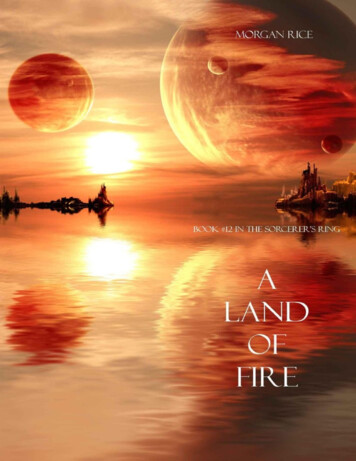

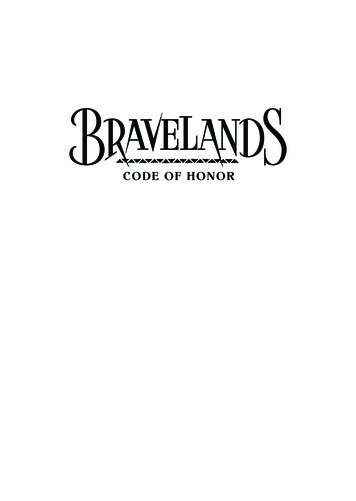


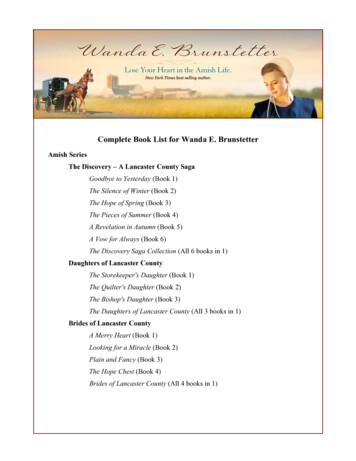
![The Book of the Damned, by Charles Fort, [1919], at sacred .](/img/24/book-of-the-damned.jpg)
